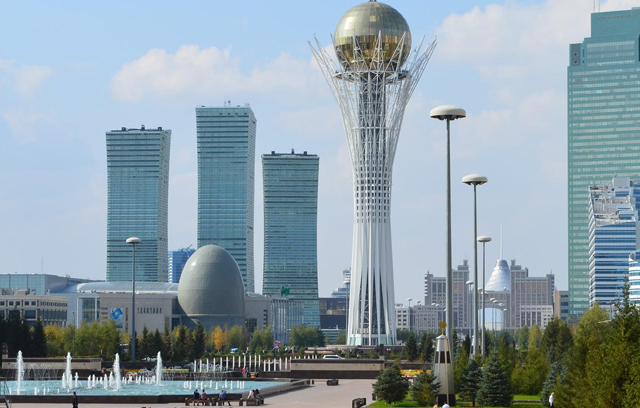Kazakhstan is emerging as a significant player in the global agricultural market. The country boasts vast arable land and a favorable climate for growing various crops. This has led to a substantial increase in agricultural exports in recent years. We will examine Kazakhstan’s key agricultural exports, focusing on destinations and volumes.
Major Export Products and Destinations
Wheat remains Kazakhstan’s primary agricultural export. Specifically, in 2023, wheat exports reached significant volumes, solidifying Kazakhstan’s position as a reliable supplier. Key importing countries included primarily Uzbekistan, Afghanistan, and Tajikistan. Further, these nations depend on Kazakhstan for a stable supply of this essential grain. Around 4.9 million tons of wheat were exported in the period September 2023 – January 2024. This represents a decrease of 21% compared to the same period last year. The difference is mainly attributed to reduced harvests due to unfavorable weather conditions.
Moreover, barley is another crucial export commodity for Kazakhstan. The country exported approximately 900,000 tons of barley between September 2023 and January 2024. This shows the importance of barley to Kazakhstan’s agricultural trade. Iran and China were the main destinations for Kazakh barley. These exports are crucial for Kazakhstan’s economic growth.
In addition to grains, Kazakhstan exports oilseeds. Rapeseed and flaxseed are prominent examples. In fact, rapeseed exports amounted to roughly 300,000 tons during September 2023 – January 2024. Flaxseed exports, on the other hand, reached about 200,000 tons in the same period. The European Union and China are key markets for these oilseeds.
Kazakhstan Agricultural Exports: Volumes and Market Dynamics
Total grain exports from Kazakhstan were about 6 million tons from September 2023 to January 2024. This represents a 22% decrease compared to the previous year. As previously mentioned, weather conditions impacted harvest yields. Even so, Kazakhstan continues its efforts to diversify its export markets. For instance, the country is actively exploring opportunities in Southeast Asia and the Middle East.
Furthermore, the price of Kazakh wheat on the global market is competitive. This makes it attractive to importing countries. However, transportation costs and logistical challenges can sometimes affect competitiveness. Despite these challenges, Kazakhstan is working to improve infrastructure. Consequently, this will ease the movement of goods.
Specific Product Analysis: Wheat, Barley, and Oilseeds
Wheat exports are central to Kazakhstan’s agricultural sector. The quality of Kazakh wheat generally meets international standards. This allows it to compete effectively in various markets. As an example, the government implements quality control measures. These measures ensure that exported wheat meets the required specifications.
Barley finds use in animal feed and brewing industries. Iran’s demand for Kazakh barley is high because of their domestic requirements. China also presents a promising market for Kazakh barley. China needs barley for its growing livestock sector.
Regarding oilseeds, the demand for rapeseed and flaxseed is rising globally. This is because they are used in various applications. These applications include food production, animal feed, and industrial purposes. Kazakhstan has the potential to further increase its oilseed production. However, this requires investment in modern farming techniques. Also, improved processing facilities will be needed.
Geographical Distribution and Infrastructure
Kazakhstan’s geographical location presents both opportunities and challenges. On one hand, it allows access to Central Asian markets and Russia. On the other hand, its landlocked status necessitates reliance on efficient transportation networks. The country invests in railway lines and road infrastructure. This is done to facilitate trade with neighboring countries.
Moreover, the development of port infrastructure on the Caspian Sea is crucial. It provides access to international shipping routes. The Khorgos Gateway, a dry port on the border with China, is also essential. The Gateway plays a vital role in facilitating trade between Asia and Europe.
Kazakhstan Agricultural Exports: Future Prospects and Challenges
Kazakhstan’s agricultural sector has significant growth potential. Factors driving this potential include increasing global food demand and availability of arable land. To fully realize this potential, several challenges need to be addressed. These include improving farming practices and investing in technology. Also, diversification of crops and export markets is essential.
Besides these, climate change poses a significant threat. Droughts and other extreme weather events can negatively impact crop yields. The adoption of climate-smart agriculture practices is, therefore, crucial. This includes water conservation techniques and drought-resistant crop varieties.
The government plays a key role in supporting the agricultural sector. This is done through subsidies, research and development, and trade promotion initiatives. Furthermore, collaboration with international organizations and foreign investors is essential. They bring expertise and capital to the sector.
Looking ahead, Kazakhstan agricultural exports is strategically positioned to become a major agricultural exporter. Through continued investment, innovation, and sustainable practices, Kazakhstan can solidify its role in the global agricultural market. Specifically, addressing the existing challenges will unlock further growth opportunities. Consequently, this will benefit the country’s economy and food security.
Finally, remember that market dynamics change constantly. Monitoring trends is crucial for any stakeholder. Kazakhstan must stay informed. Adapting quickly to these changes will ensure continued success in agricultural exports.
Source: Informburo (Kazakhstan)

